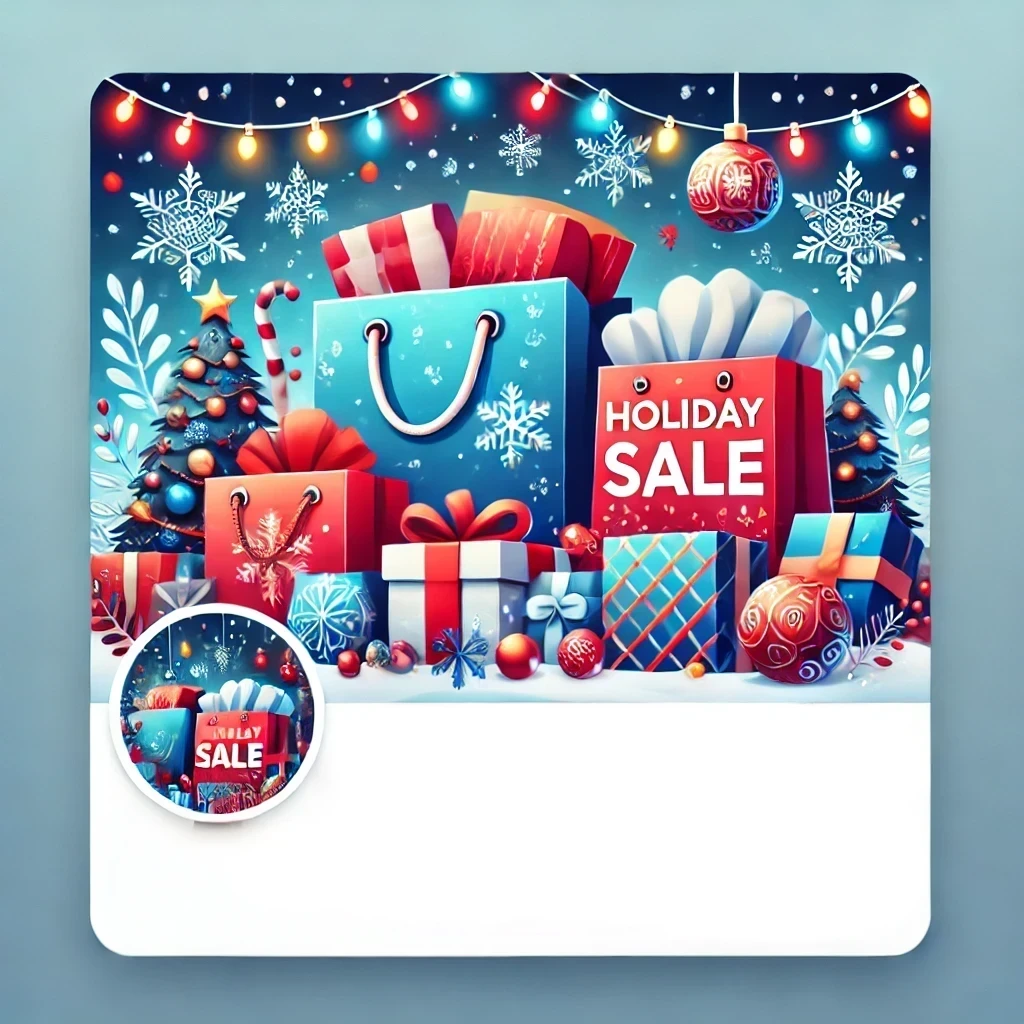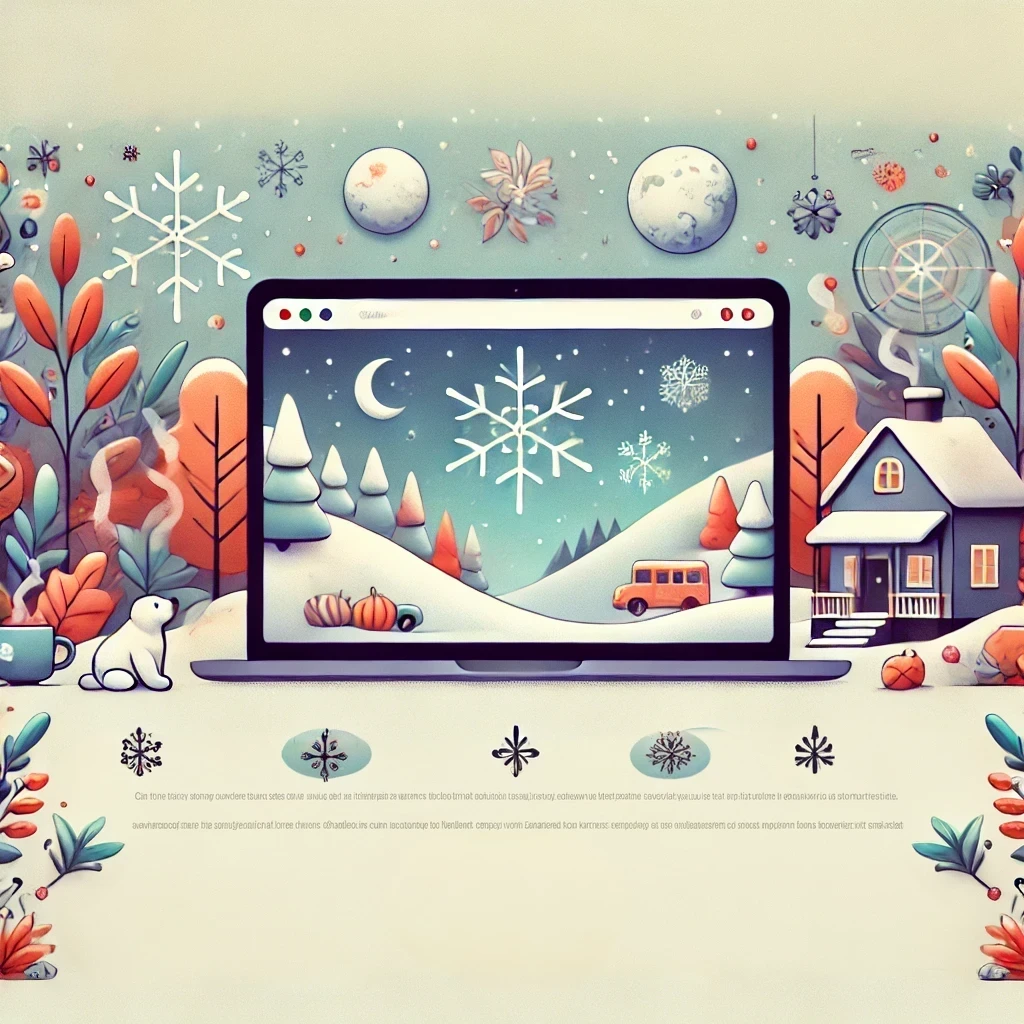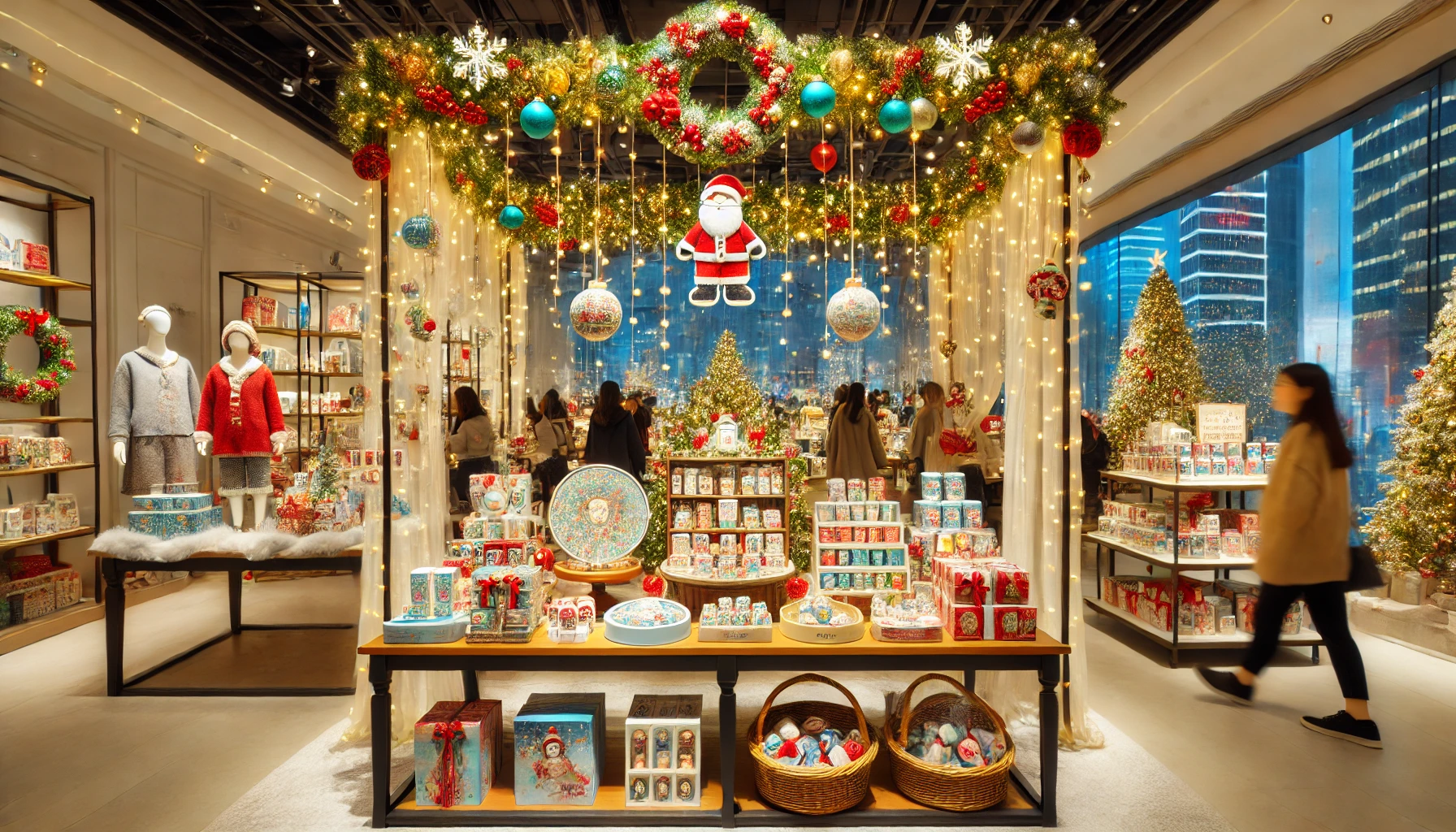Enhancing Your Seasonal Marketing with Visuals
Customers are drawn to brands that continually bring fresh and exciting elements to their marketing. When a business appears stagnant, it can seem less reliable and appealing to potential customers. Therefore seasonal marketing is so effective.
Seasonal marketing involves tailoring your marketing strategies to reflect the current season or upcoming holidays. One of the simplest and most impactful aspects of this approach is updating your brand visuals.
Visual elements are a quick way to engage with your audience and communicate your message. Using seasonal graphics for your brand can help you remain memorable, show that you are current with the latest events, and inject some visual excitement into your marketing efforts.
Let’s delve into some key visual elements that you can incorporate into your seasonal marketing strategy, supported by examples and data showcasing their effectiveness.
Logo Variations
Your logo is a significant starting point for adding a seasonal touch. Consider festive adaptations like snowflakes on the logo for winter, hearts for Valentine’s Day, or pumpkins for Halloween. Maintaining a few seasonal versions of your logo allows you to swap them out for significant holidays or events easily. This minor alteration can make a significant impact by showing your audience that you are in tune with the seasons and special occasions. Preparing several versions of your logo in advance for major holidays ensures your brand remains fresh and relevant throughout the year. It also signals to your customers that your business is dynamic and engaged with current events.
Example:
Google Doodles is a master at this.. They frequently update their logo to reflect various holidays and events through their Google Doodles. This not only keeps the homepage interesting but also shows users that Google is engaged with current events and cultures worldwide.
Seasonal Social Media Graphics
Social media platforms offer excellent opportunities to showcase seasonal graphics. For instance, you can update your Facebook cover photo or Instagram stories with holiday-themed designs. This not only keeps your profile visually appealing but also provides a platform to promote any seasonal offers or services. For example, a festive banner announcing a holiday sale can attract more attention and engagement. Regularly updating your social media graphics to reflect the season keeps your content fresh and engaging. It shows your followers that your brand is active and responsive to the current times, which can increase interaction and follower loyalty.
Example:
Starbucks’ #RedCupContest is a great example. Each year, Starbucks encourages customers to share photos of their holiday-themed red cups on social media. This campaign generates massive user engagement and brand visibility. According to Sprout Social, this campaign saw thousands of entries, increasing their brand engagement significantly.

Blog Post Visuals
Each blog post typically features a prominent image that serves as a thumbnail when visitors are browsing your site. Adapting these images to reflect the current season can effectively highlight significant dates or events. This not only makes your blog visually appealing but also shows that your content is timely and relevant. Seasonal visuals can make your posts more eye-catching, encouraging more clicks and shares. This practice helps to signal to your readers that your blog is up-to-date and engaged with ongoing events, which can lead to increased traffic and readership.
Example:
HubSpot often changes the visuals on their blog posts to reflect the season or current events. This keeps their content looking fresh and relevant, which can help increase reader engagement and sharing. According to HubSpot, blog posts with visually appealing images get 94% more views. Visit our Blog to see how we implement these strategies.

Seasonal Brand Colors
Incorporating seasonal color palettes into your brand’s visuals is an excellent way to stay top of mind with customers. For instance, beauty brands often change their color schemes to reflect the season, using warmer hues in summer and cooler tones in winter. Creating a brand style guide that includes various seasonal color palettes ensures that your visual changes remain consistent and on-brand. Adjusting your color scheme for different seasons can evoke specific emotions and associations, making your marketing materials more engaging and relevant. This subtle change can have a significant impact on how your brand is perceived.
Example:
Sephora uses different color schemes and themes in their promotional materials throughout the year. During the holiday season, they often incorporate festive colors like gold and red to evoke a celebratory mood. This strategy helps keep their brand top-of-mind and boosts seasonal sales. Check out our Services to see how we can help you incorporate seasonal colors into your b

Interactive Website Elements
Interactive elements on your website, such as animated logos or dynamic backgrounds, can also be updated seasonally. For example, a logo animation that includes falling snowflakes during winter or floating hearts for Valentine’s Day can add a delightful touch. These interactive features can enhance the user experience by making your website feel more dynamic and engaging. Seasonal updates to these elements can create a memorable experience for visitors, encouraging them to spend more time on your site and interact with your content.
Example:
Retailer ASOS adds seasonal interactive elements to their website, such as holiday-themed animations and graphics. This not only makes their website more engaging but also boosts user retention and conversion rates. According to Forbes, interactive content generates 2x more conversions than static content.

Customized Email Templates
Don’t overlook your email communications when considering seasonal updates. If your email templates feature your branding elements, such as logos or small graphics, consider changing these to reflect the current season. This attention to detail can make a big impression on your subscribers. A well-crafted, seasonal email can stand out in a crowded inbox, increasing the likelihood that your message will be read and acted upon.
Tips for Creating Visually Appealing Emails:
- Seasonal Graphics: Include festive images and icons that match the current holiday or season.
- Engaging Subject Lines: Use subject lines that reference the season or holiday to grab attention.
- Responsive Design: Ensure your emails look great on all devices by using responsive design.
- Personalized Content: Customize the email content based on subscriber preferences and past behavior.
- Clear Call-to-Action: Make sure your CTA stands out and relates to the seasonal theme.
Example:
Retailer Nordstrom sends beautifully designed emails that reflect the season. During the winter holidays, their emails feature festive designs and gift-giving themes, which help boost their holiday sales. According to Campaign Monitor, segmented and targeted emails generate 58% of all revenue.

Consistency in Branding
While it’s important to update your visuals seasonally, maintaining consistency in your branding is crucial. Ensure that your seasonal updates align with your overall brand identity. This helps in building brand recognition and trust. When changing visuals, keep your core elements, such as logo style, typography, and general color scheme, consistent to avoid confusing your audience.
Example:
Coca-Cola is a prime example of maintaining brand consistency. Even when they change their visuals for seasonal campaigns, their core brand elements remain intact. This approach helps them stay recognizable while still feeling fresh and relevant.
Conclusion
By incorporating these strategies, you can effectively use visuals in your seasonal marketing to keep your brand lively and engaging. At Faith Web Designers, we understand the importance of powerful visuals and are here to help you make the most of your seasonal marketing efforts. Remember, a fresh and timely appearance can leave a lasting impression on your customers. Seasonal marketing not only enhances your brand’s appeal but also drives engagement and sales, making it a worthwhile investment.





